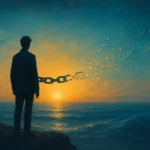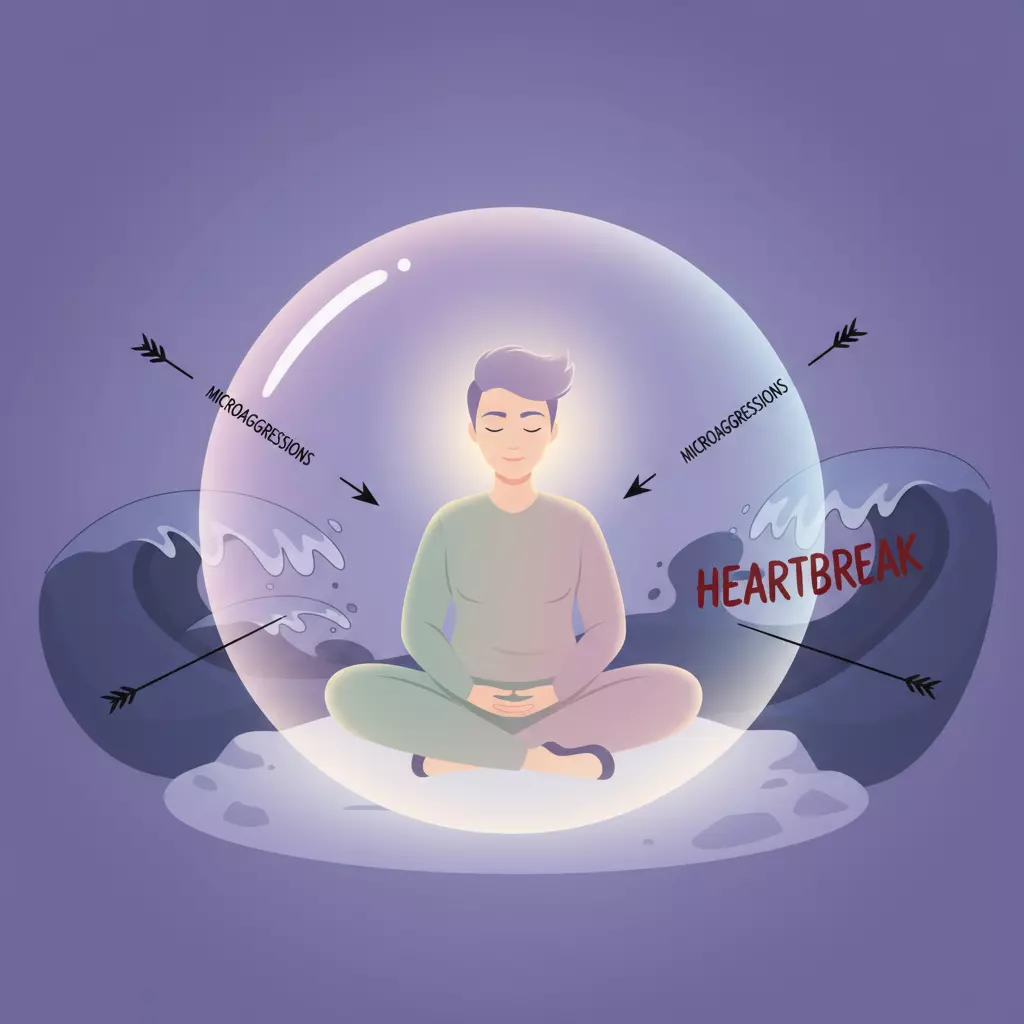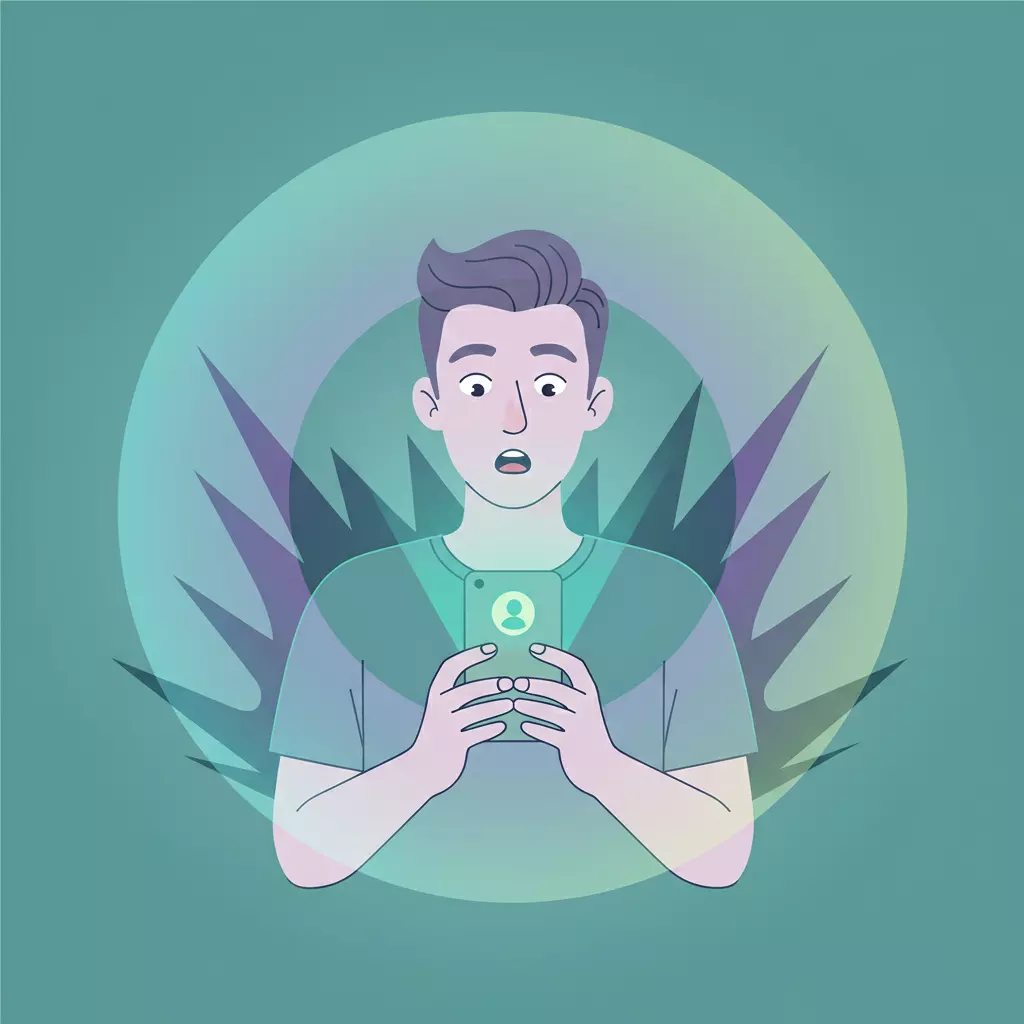Table of Contents
There’s a moment men don’t often talk about after a breakup: not the night you move out, not the first week of silence, not even the big milestones like her birthday or the anniversary you’re not celebrating. It’s later. When you think you’re fine, functioning, maybe even laughing again—and then out of nowhere, a wave hits. A delayed grief spike.
It’s not random. It’s not weakness. It’s the body cashing in on emotions you postponed. And in those sixty minutes, the urge can feel unbearable: to text her, to scroll her Instagram, to drown it all in whiskey. But this urge isn’t forever. Like a storm, it builds, peaks, and passes—if you don’t chase it. What you need isn’t shame or panic. What you need is a protocol.
Why the Delayed Grief Spike Hits Later
Men are trained to “be strong,” which often means burying feelings under work, distraction, or silence. But research shows what gets buried doesn’t vanish—it ferments. Suppressed grief reemerges when the nervous system finally loosens its grip. That’s why you can feel steady for weeks and then suddenly collapse into longing or anger.
Add rumination—those endless loops of “what ifs” and “what did I miss”—and the spike becomes a craving, as real and consuming as any chemical urge.
The spike isn’t evidence that you’re back at square one. It’s your brain’s attachment system flaring like an old injury.
Painful, yes—but predictable. And what is predictable can be survived.


No Contact Isn’t a Game – It’s a Healing Strategy
Let’s examine the No Contact strategy in: Science & Psychology, Planning it, Digital Hygiene, Relapses-Cravings & Crashes, Special Cases & Exceptions… and Signs that it’s working +What comes next.
Tap here to read more →Riding the Urge Instead of Relapsing
The danger of the grief spike isn’t the emotion itself—it’s what you do in panic. That’s when men relapse: firing off late-night texts, driving past her place, slipping back into self-blame. But studies in addiction recovery point to something crucial: urges follow a curve. They surge, they peak, they fall.
The trick is not fighting the wave or surrendering to it, but riding it—what researchers call “urge surfing.”
This isn’t about toughness. It’s about skill. By naming the urge for what it is (“This is a grief spike, not a command”), you step outside it. By focusing on the body instead of the story in your head, you give the wave time to pass.
A 60-Minute Protocol for Surviving the Spike
- 0–10 minutes: Name it. Say out loud or write: “This is a grief spike. It will peak and it will pass.” Naming breaks the trance of rumination.
- 10–20 minutes: Ground the body. Slow breathing, a body scan, push-ups, or even a walk around the block—anything to anchor you in the present.
- 20–40 minutes: Absorb the mind. Pick a neutral but mildly engaging task—sorting laundry, playing a puzzle game, journaling. It keeps your hands busy while the urge crests.
- 40–60 minutes: Reset. Put on music that soothes rather than fuels the pain, listen to a podcast, take a cold shower, or stretch. Let the body come down gently.
Most spikes fade within this window. When you reach the hour mark, you’ll notice the intensity has softened. What felt like a command was only a craving.

Closing Reflection
Breakups are not battles of willpower but lessons in patience with yourself. The delayed grief spike is not your undoing—it’s proof that you are healing in layers. Every time you ride the wave instead of breaking no-contact, you strengthen a new pattern: one where your peace matters more than your impulses.
And one day, the waves will still come, but they’ll be smaller, gentler, easier to ride. Until then, hour by hour is enough.
FAQ
Q1. What is a delayed grief spike after a breakup?
A delayed grief spike is a sudden surge of sadness, longing, or emotional pain that often hits weeks or months after a breakup. It happens because men may suppress feelings initially, and those emotions resurface strongly later.
Q2. How long does a delayed grief spike usually last?
Most grief spikes peak and begin to fade within 20–60 minutes if you don’t fuel them with rumination or relapse behaviors. That’s why a structured 60-minute urge protocol can be so effective for riding out the wave.
Q3. What should I do when I feel the urge to contact my ex during a grief spike?
Instead of reaching out, use grounding strategies like deep breathing, a short walk, or journaling. The urge is temporary, and following a 60-minute grief protocol helps you avoid breaking no-contact.
Q4. How can men prevent relapse during a delayed grief spike?
The key is recognizing the spike as a natural wave, not a command. By practicing techniques like ‘urge surfing,’ men can let the craving pass without texting, calling, or checking their ex’s social media. This builds resilience and speeds up healing.
Scientific Sources
-
S. Mancone et al. (2025): Emotional and cognitive responses to romantic breakups in emerging adulthood
Key Finding: Rumination slows emotional recovery and fuels prolonged distress after romantic breakups.
Why Relevant: Supports the concept of a delayed grief spike by showing how suppressed rumination acts like a craving that resurfaces later.
https://www.ncbi.nlm.nih.gov/pmc/articles/PMC11985774/ -
K. Witkiewitz et al. (2011): Moderating Effects of a Craving Intervention on the Association between Negative Mood and Heavy Drinking Following a Discrete, Stressful Event
Key Finding: Mindfulness-based ‘urge surfing’ reduces the impact of negative moods on relapse behaviors.
Why Relevant: Offers a model for how men can ride out grief spikes without relapsing into destructive behaviors such as contacting an ex.
https://www.ncbi.nlm.nih.gov/pmc/articles/PMC3157314/ -
M.C. Eisma et al. (2023): Adult attachment and prolonged grief: A systematic review
Key Finding: Insecure attachment styles are linked to prolonged or delayed grief responses.
Why Relevant: Explains why men often experience sudden grief crashes due to avoidance or suppression patterns.
https://www.sciencedirect.com/science/article/pii/S0191886923002386
- Proven Healing: How an Accountability Buddy Transforms Breakup Recovery with Weekly Check-ins

- Breakup Anniversary Survival Guide: Heal, Prevent Relapse & Move Forward

- Slip-Up Repair Plan: How to Recover After No Contact Relapse Without Shame

- Queer Breakup Relapse Recovery: Protect Your Nervous System & Keep Your Streak Strong

- Transgender Grounding Techniques: Powerful Ways to Ease Dysphoria & Healthcare Stress

- Chosen Family Support for Lesbian Women: Powerful Healing Without Looping the Story

- Gay Men Jealousy Reset: Fast Ways to Calm Spikes After Seeing Your Ex

- Women & Nighttime Rumination: 5 Powerful Steps to Heal and Sleep Better

- Men & the Delayed Grief Spike: A Powerful 60-Minute Healing Protocol

Leave a Reply